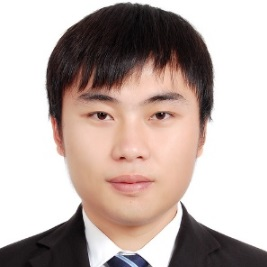3D Reconstruction with RGB-D Cameras and Multi-sensors
A special issue of Sensors (ISSN 1424-8220). This special issue belongs to the section "Sensing and Imaging".
Deadline for manuscript submissions: 31 July 2024 | Viewed by 9585
Special Issue Editors
Interests: biometrics; measurement; point cloud processing; deep learning; 3D body scanning
Special Issues, Collections and Topics in MDPI journals
Interests: machine learning; computer vision; 3D graphics; anthropometry
Special Issues, Collections and Topics in MDPI journals
Interests: computer graphics; computer animation; computer vision; machine learning and robotics
Special Issues, Collections and Topics in MDPI journals
Special Issue Information
Dear Colleagues,
Multi-sensor systems are widely used in 3D reconstruction tasks, such as 3D shape reconstruction, 4D body scanning, and human activity monitoring, to name a few. Compared to single-sensor systems, multi-sensor systems can simultaneously capture data from different viewports, which enables real-time complete shape capture. However, multi-sensor systems are usually expensive and require professional knowledge for operation. With the advancement of commodity RGB-D cameras, there have been countless attempts to build low-cost 3D reconstruction systems. During these attempts, additional challenges were encountered (e.g., calibration of multiple RGB-D sensors, human joint detection from point clouds, low-resolution of the scanned images, and compression of large-scale point clouds), which have encouraged researchers to explore more advanced algorithms.
In this context, the objective of this Special Issue is to connect researchers in the field of camera calibration of multiple sensors, RGB-D sensors, machine learning, 3D scanning, 4D capture, and other related fields. This issue will provide a state-of-the-art representation of methods that have led to progress in the research and application of multiple sensors.
We are soliciting original, full-length, unpublished research articles and reviews focused on this research topic. Topics of interest include, but are not limited to, the following:
- Point cloud processing
- Multi-sensor shape capture
- Multi-sensor human activity understanding
- RGB-D 3D reconscturtion
- RGB-D human activity understanding
- RGB-D calibration
- RGB-D SLAM
- RGB-D data processing
Dr. Pengpeng Hu
Prof. Dr. Adrian Munteanu
Dr. He Wang
Dr. Walid Darwish
Guest Editors
Manuscript Submission Information
Manuscripts should be submitted online at www.mdpi.com by registering and logging in to this website. Once you are registered, click here to go to the submission form. Manuscripts can be submitted until the deadline. All submissions that pass pre-check are peer-reviewed. Accepted papers will be published continuously in the journal (as soon as accepted) and will be listed together on the special issue website. Research articles, review articles as well as short communications are invited. For planned papers, a title and short abstract (about 100 words) can be sent to the Editorial Office for announcement on this website.
Submitted manuscripts should not have been published previously, nor be under consideration for publication elsewhere (except conference proceedings papers). All manuscripts are thoroughly refereed through a single-blind peer-review process. A guide for authors and other relevant information for submission of manuscripts is available on the Instructions for Authors page. Sensors is an international peer-reviewed open access semimonthly journal published by MDPI.
Please visit the Instructions for Authors page before submitting a manuscript. The Article Processing Charge (APC) for publication in this open access journal is 2600 CHF (Swiss Francs). Submitted papers should be well formatted and use good English. Authors may use MDPI's English editing service prior to publication or during author revisions.









